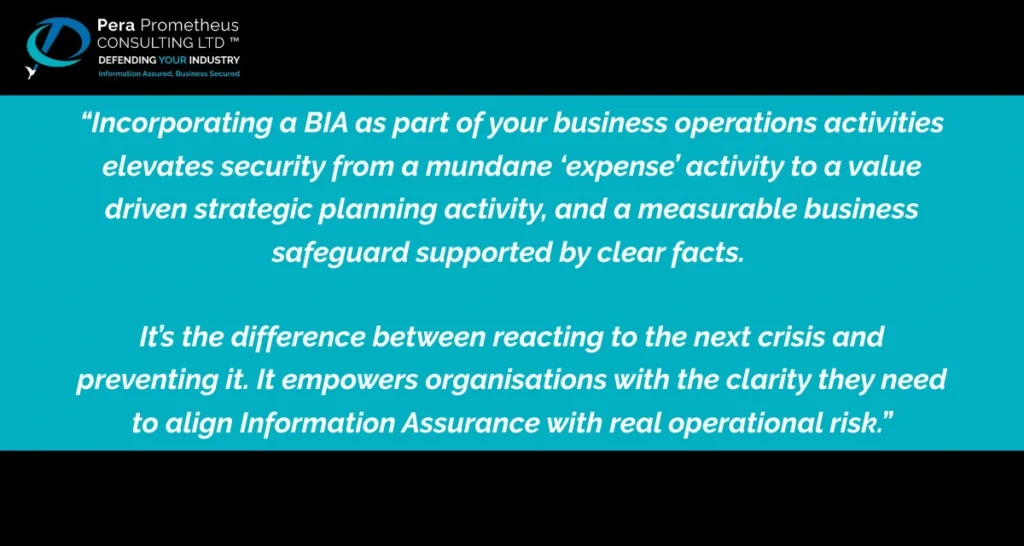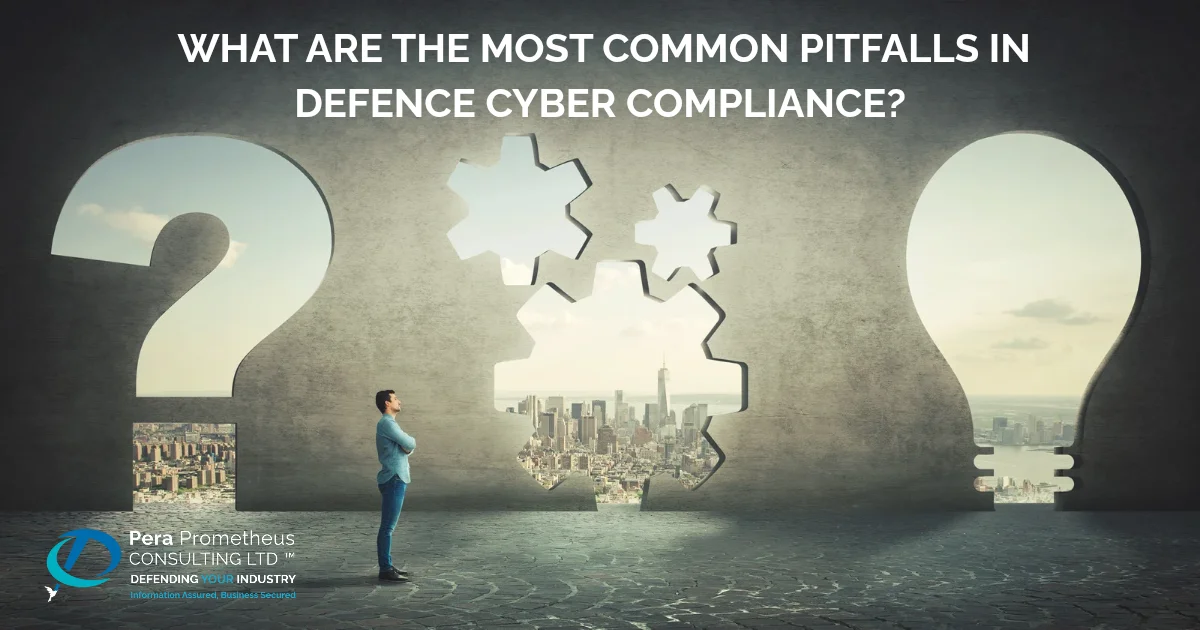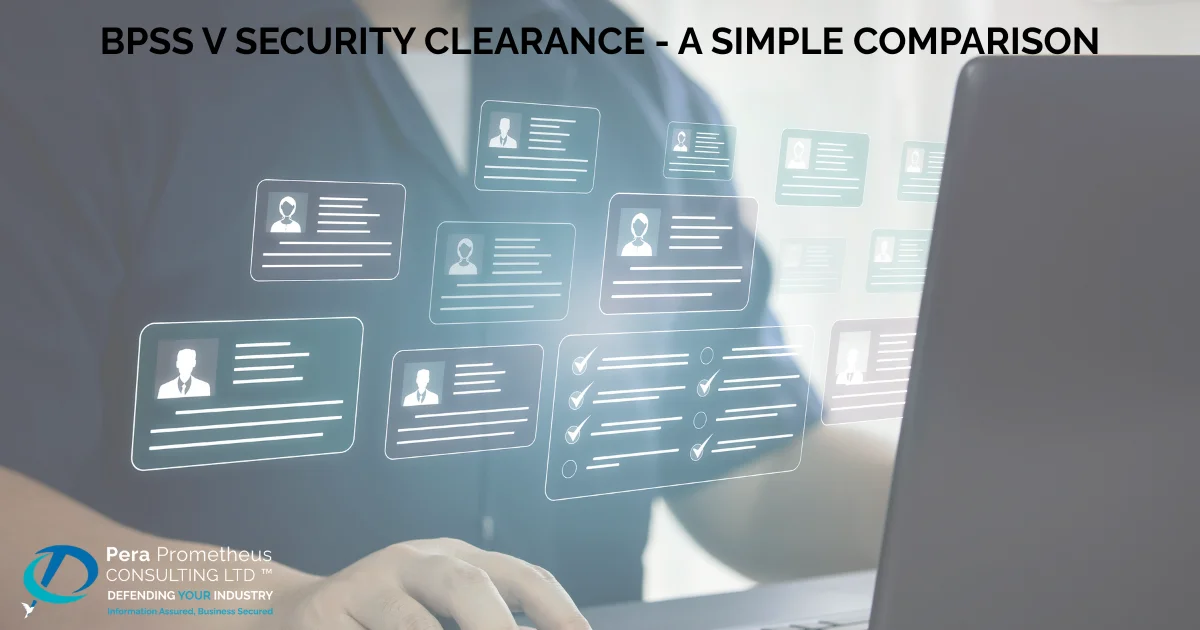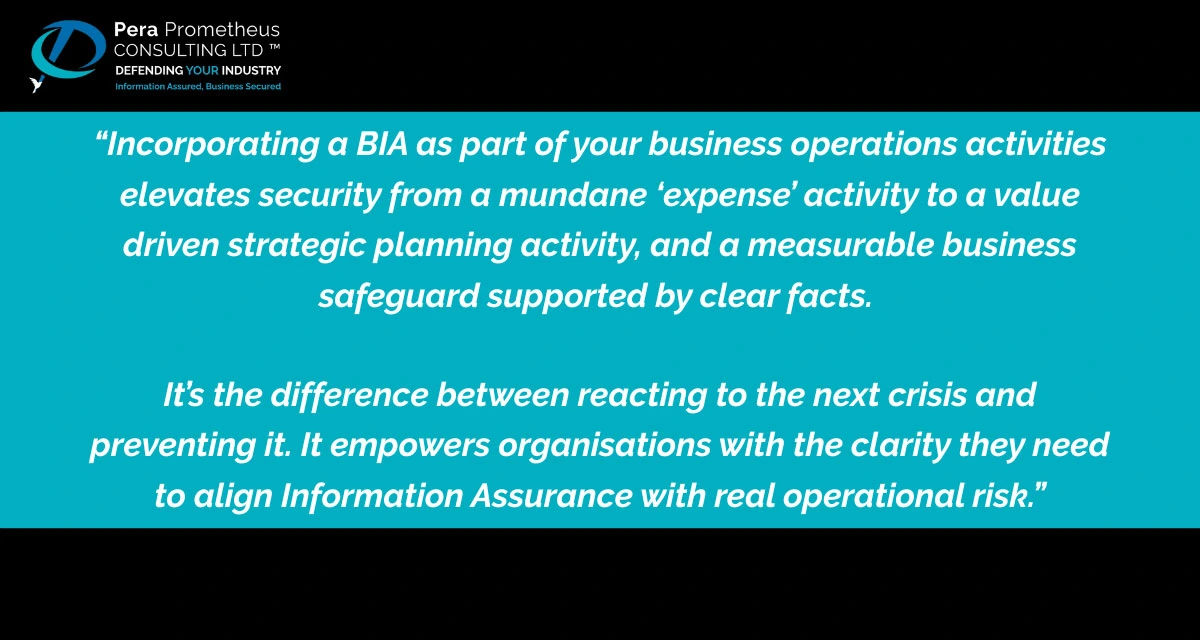What would happen to your business if you lost access to your critical information or customer data for just 72 hrs? For most UK Small and Medium Enterprises (SMEs) in defence, aerospace, or professional services, the answer is lost revenue, damaged reputation, and possible exclusion from government contracts. Yet many business owners still treat information security as “something the IT team sorts out.”
A properly conducted Business Impact Analysis (BIA) changes that forever. It offers a structured way to understand which parts of the business are most critical, how disruption affects them, and what is needed to protect them. It forms the bridge between Information Assurance (IA) and the practical realities of operational risk giving leaders the clarity to make secure, confident, and informed decisions.
What Exactly Is a BIA?
A BIA is a structured exercise that answers one core question: “If something goes wrong, which parts of my business will suffer the most and how quickly do we need to fix them, before they fail completely?”
It is not the same as a standard risk assessment (which lists threats and likelihoods). A BIA measures the business consequences, functions, contracts, regulatory penalties, and reputation, when an incident occurs.
How Does BIA Fit Within Information Assurance?
Information Assurance is the practice of managing and protecting information, its Confidentiality, Integrity, and Availability (CIA) based on business needs and risk appetite. But IA cannot be effective if it is operating in isolation from the organisation’s priorities. That is where a BIA plays a central role.
A BIA links business requirements to IA requirements. It identifies:
- The information assets most essential to operations
- Where threats and opportunities reside in the business
- Who depends upon information flows
- How quickly data pathways must be restored
- The consequences if information is compromised
In other words, BIA translates information assurance strategy into actionable operational priorities. It ensures that the right controls are applied to the right assets, at the right level optimising cost, efficiency, and protection.
How Does a BIA Help Align Information Assurance with Operational Risk?
Conducting a proper BIA provides the ability to connect business priorities with security decisions. Through structured analysis, it helps an organisation:
- Map core processes and the data, systems, people, and suppliers that support them
- Identify which assets require the highest levels of availability or protection
- Establish acceptable downtime (RTO – Recovery Time Objectives) and data recovery requirements (RPO – Recovery Point Objectives)
- Determine which risks pose the greatest operational impact
- Identify opportunities for efficiency and improvement
- Prioritise security investment where it matters most
This ensures Information Assurance is no longer shaped by guesswork or individual opinion and hearsay. Instead, IA contributes toward a meaningful, business-driven initiative that strengthens operational resilience rather than being viewed as a back-office process that slows it down.
What Questions should a BIA Help Business Owners Answer?
The outputs from the BIA should give business leaders clear, actionable insights and answer questions like:
- Which business processes are truly critical?
- Which systems and data assets support those processes?
- What would the financial and operational impact of a loss of service be?
- How long can we operate without key systems or suppliers?
- Where should we prioritise our security and resilience resources and efforts?
These questions help to cut through complexity and assist with making informed decisions based upon measurable impact, rather than assumptions.
How Does BIA Strengthen Secure Decision-Making?
Secure decision-making is a process involving the evaluation of potential outcomes, risks, and benefits, to choose a course of action that protects an organisation’s assets and meets its security goals, such as resilience, confidentiality, integrity, and availability.
The conduct of the BIA provides a clear answer to business leaders on how IA links with its operational risks and makes secure decision-making easy and justifiable. It enables the senior leaders or business owners to:
- Justify investments in cybersecurity and resilience
- Validate the importance of backup and recovery solutions
- Select reliable suppliers
- Determine access control and data protection requirements
- Focus resources where disruption would cause the greatest harm
- Produces an information and cybersecurity road map and remediation plan to guide security efforts
How Often Should a Business Update Its BIA?
Once you have conducted a BIA it should be reviewed annually, as a business evolves the BIA should be reviewed to ensure it meets the changing environment. A current BIA ensures that Information Assurance remains aligned with real operational needs. BIA reviews are essential when:
- Onboarding new systems or cloud services
- Entering new markets
- Changing processes or suppliers
- After a disruption or cyber incident
- At least annually
Conclusion: Why a BIA is the Foundation of Confident, Secure Decision-Making
Incorporating a BIA as part of your business operations activities elevates security from a mundane ‘expense’ activity to a value driven strategic planning activity and a measurable business safeguard supported by clear facts. It’s the difference between reacting to the next crisis and preventing it. It empowers organisations with the clarity they need to align Information Assurance with real operational risk.
Ask yourself – “Are you confident in the secure decision-making process of your business? Are you confident that your business is resilient to survive a major disruption? Do you even know how an information incident could effect your business?” If the answer worries you then it is advisable to either conduct a thorough BIA yourself or get support from experts like Pera Prometheus to conduct it. It may well be the best investment of your business.
Stay Safe, Stay Secure




